EARLY HISTORY
Prior to the colonial settlement of Frederick County, the land on which the City of Frederick and this museum stand was home to transient Native American populations, including the Piscataway or Conoy People. In 1745, Daniel Dulany the Elder, a politician, planter, and land speculator, bought a large tract of land on the west bank of the Monocacy River along a tributary named Carroll Creek and laid out what he called, “Frederick Town.”
The first permanent settlers in Dulany’s frontier market town were John Thomas Schley (1712 – 1790) and his wife, Maria Margaretta Wintz Schley (1712-1787). They immigrated from Germany and established a residence and tavern along East Patrick Street, and John served as the schoolmaster for the German Reformed Church. Among the early German families who settled along with the Schley’s in Frederick Town were John Jacob Baltzell and his wife, Eva Catherine Wintz, the sister of Maria Margaretta Schley.
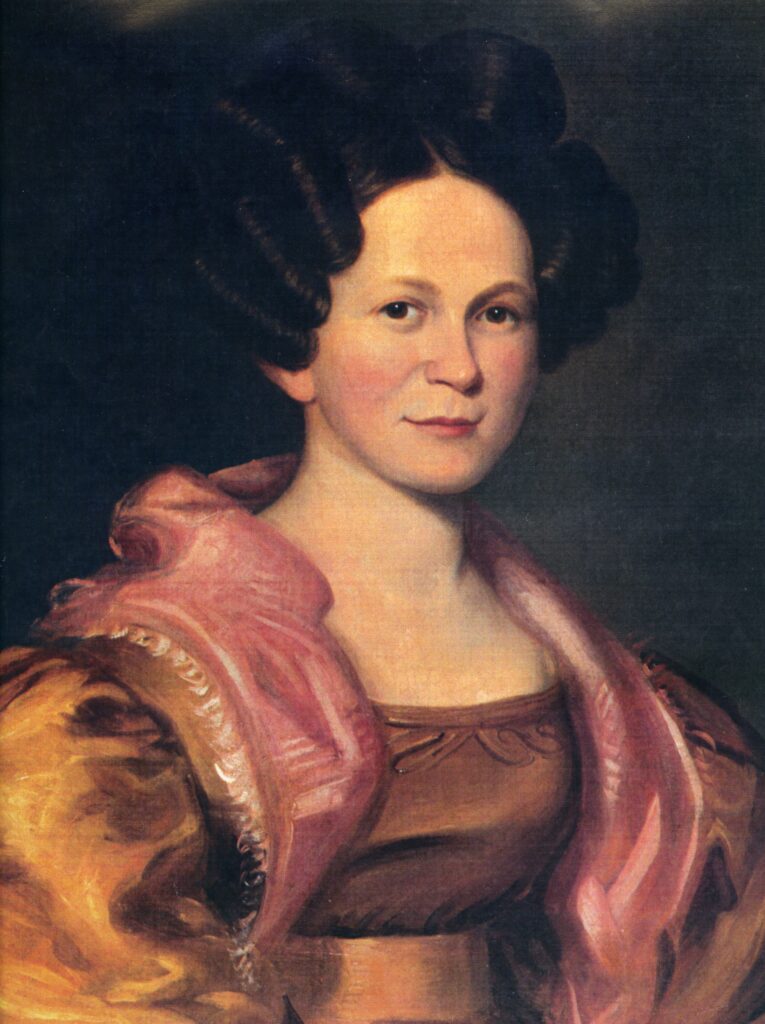

In 1824, Dr. John Frederick Baltzell (1775-1854), grandson of John and Eva, began construction of the grand Federal style house at 24 East Church Street. The younger Baltzell was born in Frederick and later studied medicine under Dr. Philip Thomas, eventually receiving a degree from the University of Pennsylvania. The property actually includes three of Dulany’s original lots, one of which Baltzell acquired from his father; the adjoining lots allowed him to create a large town house with garden and outbuildings along one of the emerging city’s most prominent streets.
Dr. Baltzell married Ruth Ridgely in 1821 and the couple raised ten children in this house (seven of whom lived to adulthood). Upon his death in 1854, Dr. Baltzell left this house and his personal property to his wife. The family sold the residence to Alexander Hanson one month later, and Ruth departed Frederick to live with a daughter in St. Mary’s County in southern Maryland where she died in 1867.
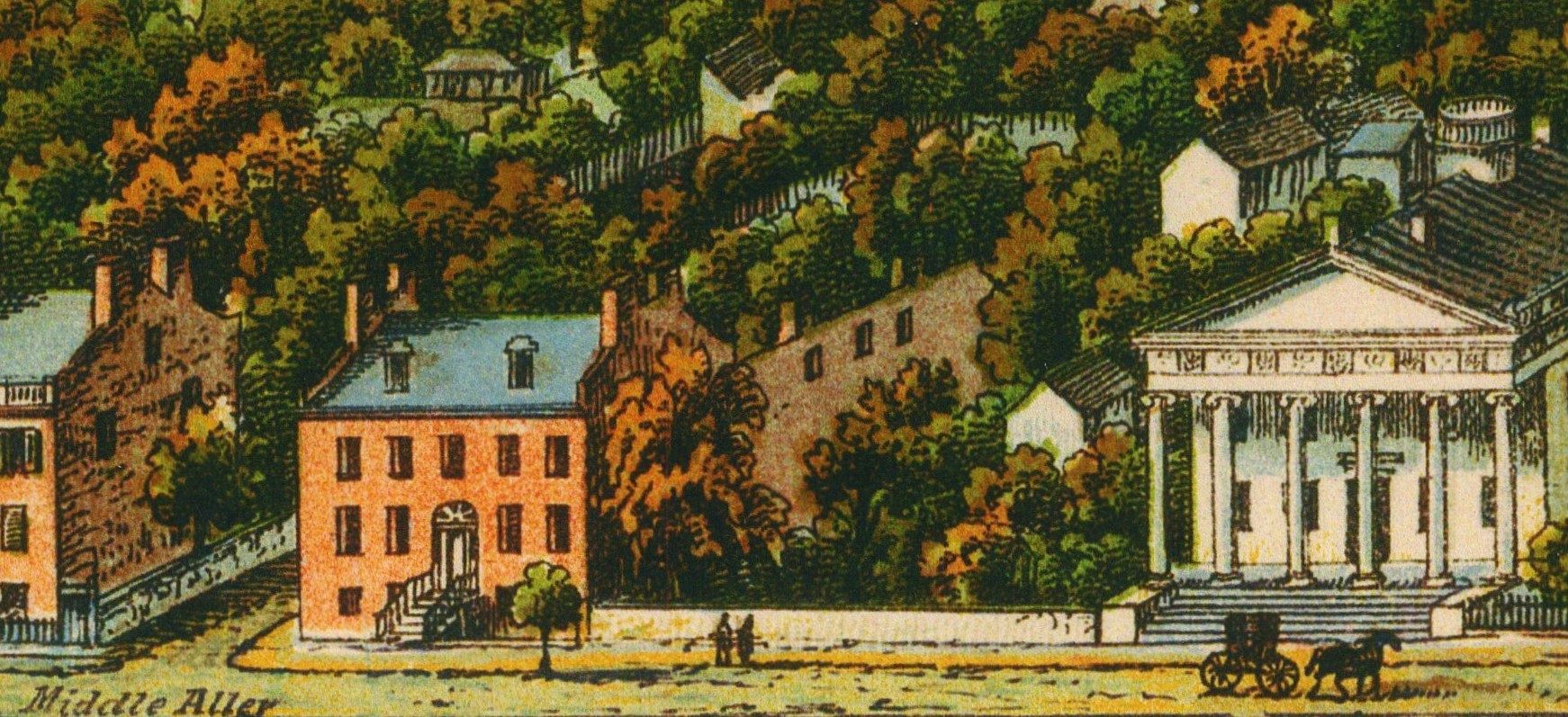
SLAVERY AND FREEDOM
The institution of chattel slavery emerged in seventeenth century Maryland out of a desire for cheap labor to work the colony’s tobacco plantations, and it persisted for 200 years. The first three owners of 24 East Church Street all engaged in the practice of chattel slavery.
Dr. John Baltzell enslaved at least eight individuals in this building. We believe the enslaved people performed domestic tasks in the household, assisted with raising the family’s children, and maintained gardens on the property. Among those enslaved was Hester Ann Diggs and her three children: Ann, John Thomas, and Emma Virginia. Dr. Baltzell purchased Hester in 1837, when she was a teenager, from Ann Johnson Grahame of Rose Hill Manor (she was the daughter of Maryland’s first governor, Thomas Johnson).

When and how Hester met her husband, John Diggs, is not known. He was enslaved by the Eichelberger family in Creagerstown until his manumission in 1854. Hester and John’s first three children were born enslaved and grew up in the Baltzell household. She and the children were itemized and appraised in the 1854 inventory of Dr. Baltzell’s personal property at his death. Ruth Baltzell freed Hester on November 1, 1854. Four years later, Ruth sold John Thomas Diggs to John H. Williams, a prominent banker in Frederick, for $225.00. The sale stipulated that John Thomas would be freed at the age of 35 (in 1882). However, in the same year Ruth also sold Emma Virginia Diggs to her father, John, for $1.00. Emma was five years old and was to remain enslaved until she attained the age of 10. Ann’s situation is unknown.
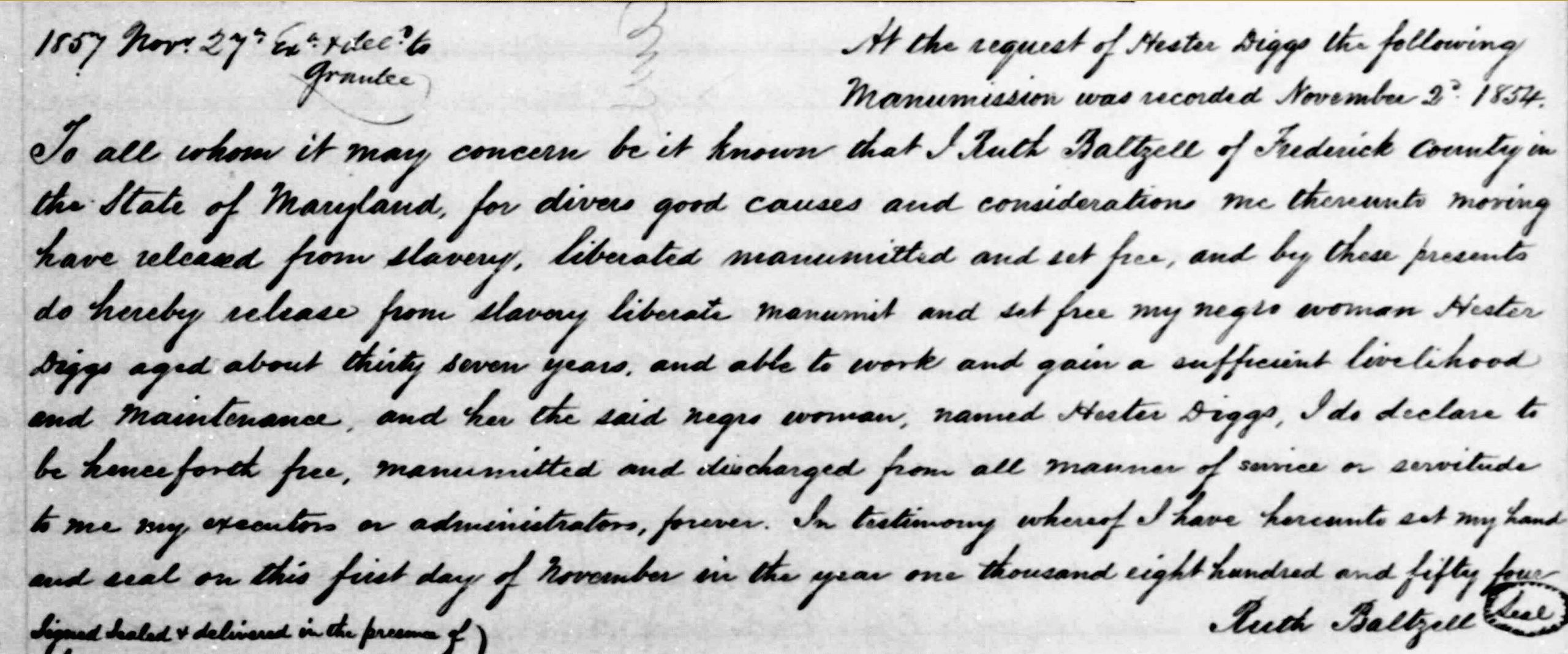
John and Hester Diggs lived as free people in Frederick for nine years after their manumissions and had two more sons, George and Daniel. John Diggs died in 1863, and Hester moved her family to New York where they initially lived in the household of Harvey and Eliza Baltzell Montgomery; Eliza was Dr. Baltzell and Ruth’s daughter. By 1870, Hester remarried to Abram Bennett and her family moved to Auburn, New York where she died in 1904 at the age of 83.
Col. Alexander Hanson, the second owner of 24 East Church Street, held people in slavery until Maryland passed a new Constitution in November 1864 that granted freedom to all enslaved people in the State. To date, we have not discovered much evidence outlining Hanson’s views or describing those he enslaved, but when he manumitted Rachel Maxwell in 1849, the document he signed expressed his “utter abhorrence in which I view all kinds of bondage and especially that which dooms a fellow being to vassalage for life.” John Loats, the third owner of the property, enslaved individuals, most likely as laborers at his tannery, but by the time he purchased 24 East Church Street, the practice of slavery was abolished.
Unfortunately, this story is largely recorded in the documents created by and for the enslavers. We will continue researching these stories in an effort to learn more about Hester’s family and others who served this property in bondage.
THE HANSONS
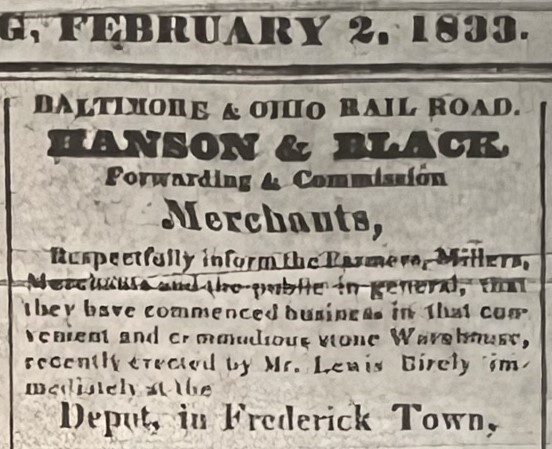
The Hanson family owned 24 East Church Street from 1854 until 1870. Alexander Baird Hanson (1790-1868) was born in Kent County on Maryland’s Eastern Shore where his family owned a plantation named Radcliffe Hall along the Chester River. Hanson served in the War of 1812 and led a unit of Kent County’s militia, for which he received the rank of colonel, and “Col. Hanson” was how news articles usually referred to him during his time in Frederick. Shortly after his marriage to Susan Wilson Black in 1829, the couple moved to Frederick. He established a wholesale grocery business and owned a warehouse along Carroll Creek.
Prior to their purchase of the Baltzell house, the Hansons lived in a house on East Patrick Street near the Square Corner. He and his wife moved into 24 East Church Street in 1854 and subsequently were joined by their son George Adolphus, and his wife, Courtney Barraud Hanson. In 1858, Hanson added the one-story annex onto the east side of the house, which George used as his law office.
Col. Hanson eagerly engaged with his adopted city. In 1846, he installed cast iron pipes under Carroll Street to furnish water to the Baltimore and Ohio Railroad freight depot and the surrounding warehouses and businesses. He was a founding trustee of the Frederick Female Seminary, overseeing the securing of a charter for the institution from the State of Maryland and the construction of the original/first building (the two are connected now and called Winchester Hall, next door). The school was the predecessor to Hood College. In 1850, he was elected president of the Frederick County Bank, a position he held until his retirement in 1867. During the Civil War, Col. Hanson’s bank was one of five to furnish cash to the Mayor and Board of Alderman in order to pay the $200,000 ransom levied on the City by Confederate General Jubal Early on July 9, 1864.
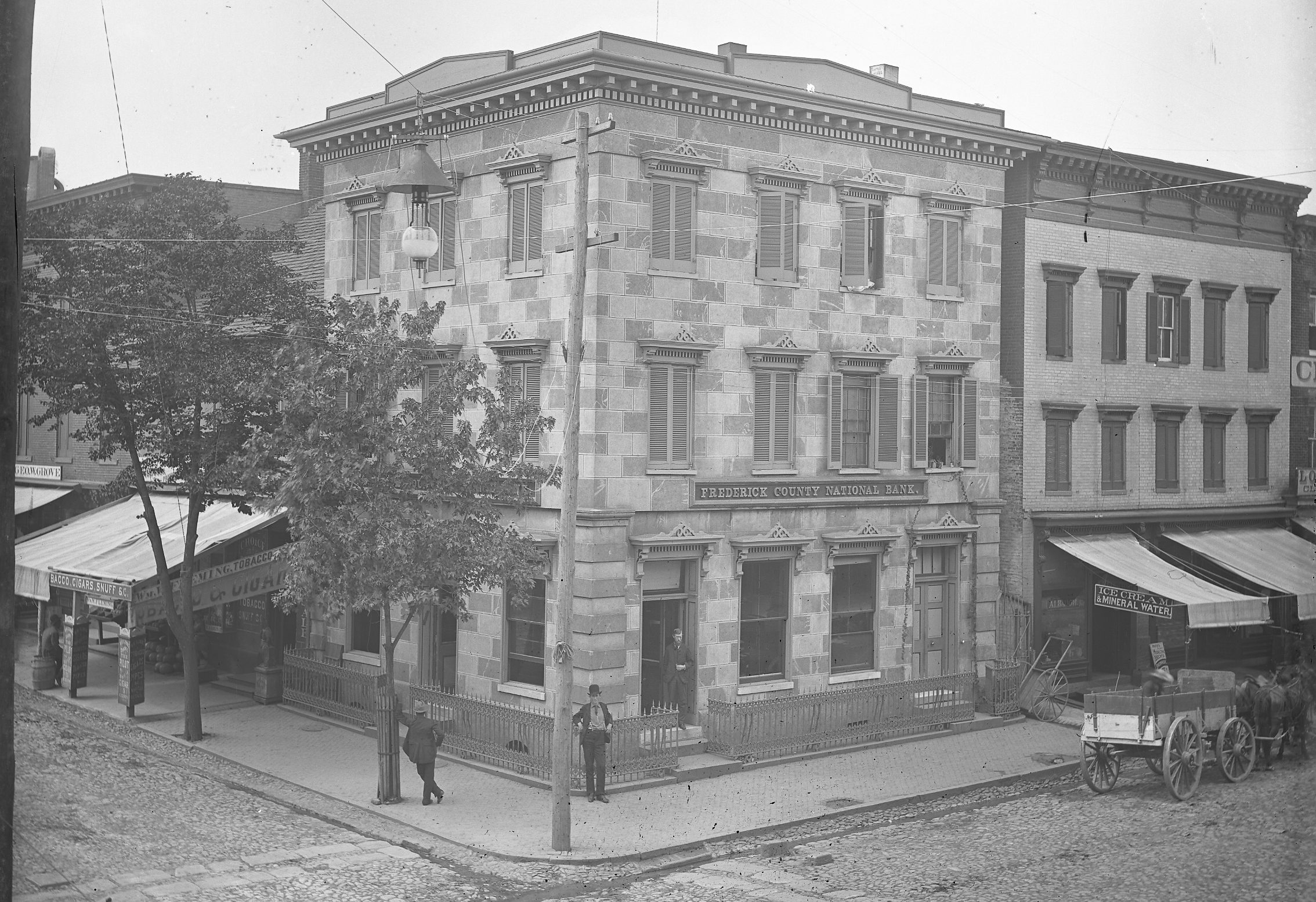
Susan Hanson died on October 6, 1864; Col. Hanson died on September 21, 1868. George inherited the property, and he and his wife continued to live at 24 East Church Street until 1870 when they sold the house to John Loats and moved back to Kent County to reside on the Hanson estate at Radcliffe Hall.
JOHN LOATS
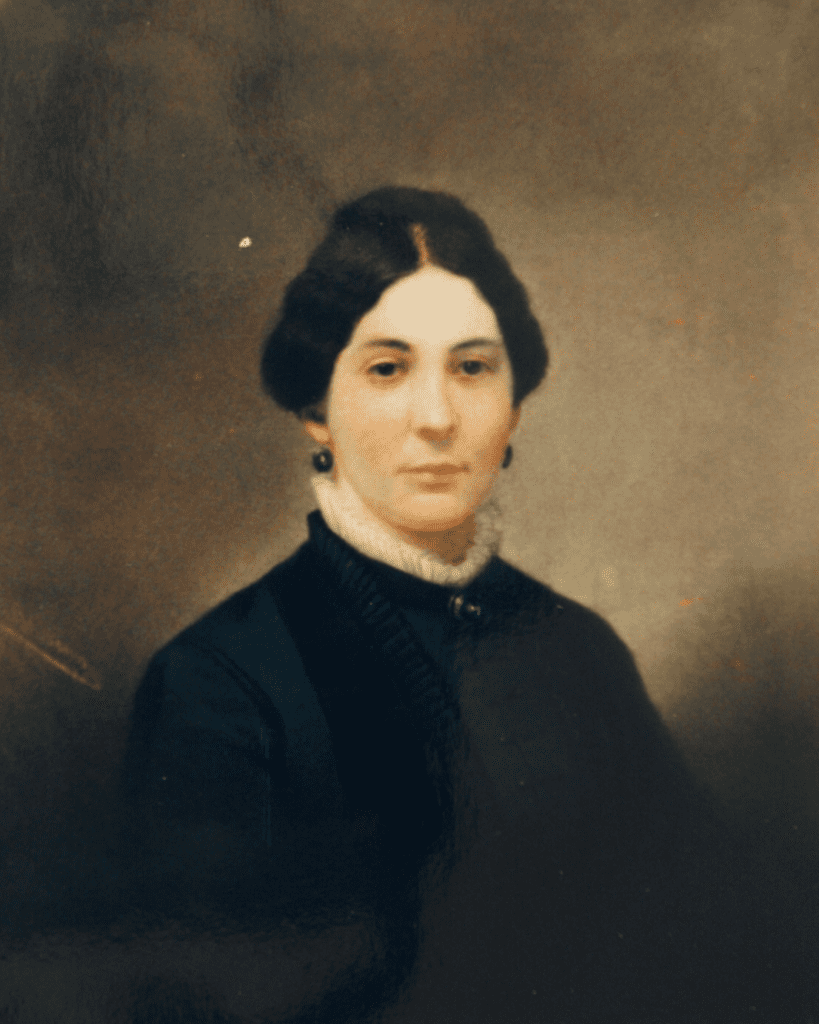
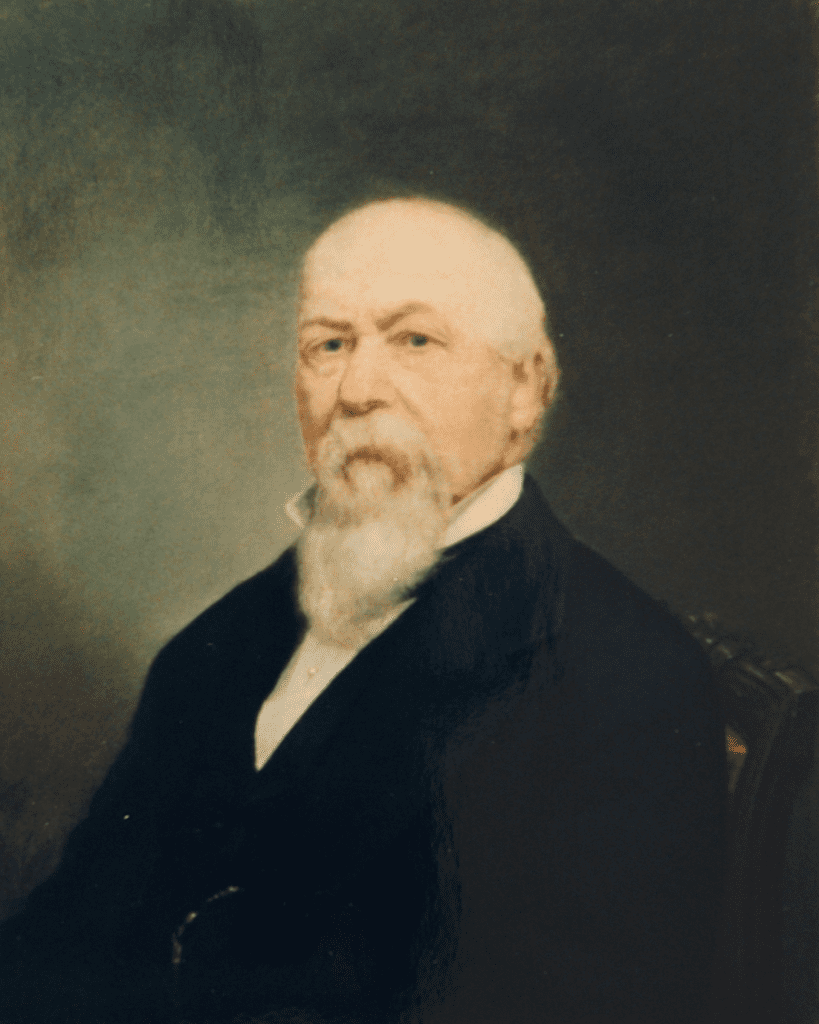
John Henry Loats was born in Baltimore County in 1814. He apprenticed with George Algire and learned the trade of tanning (processing animal skins into leather goods). Loats purchased a house and tannery along Carroll Creek in 1848 previously owned by Casper Quynn, and he moved to Frederick. His first wife, Leah Ann Chilcoat, gave birth to a son named Oscar, who died at the age of seven months on June 28, 1844. Leah died two months later on August 20, 1844. Loats married a second time to Caroline Ellen (Callie) Sifford in 1850, but the couple did not have any children. They purchased 24 East Church Street from George Hanson in 1870.
With the income derived from his successful tannery business, Loats invested in numerous commercial and civic pursuits. He founded the Frederick and Pennsylvania Line Railroad in 1867 and served as the company’s first president. This railroad, linking Frederick with the Pennsylvania Railroad at Littlestown, helped transform the East Street corridor into a center for manufacturing industries. Loats was a founding director of the Mount Olivet Cemetery and an active member of the Evangelical Lutheran Church where he served on the committee that oversaw the building of the present church in 1854-55.
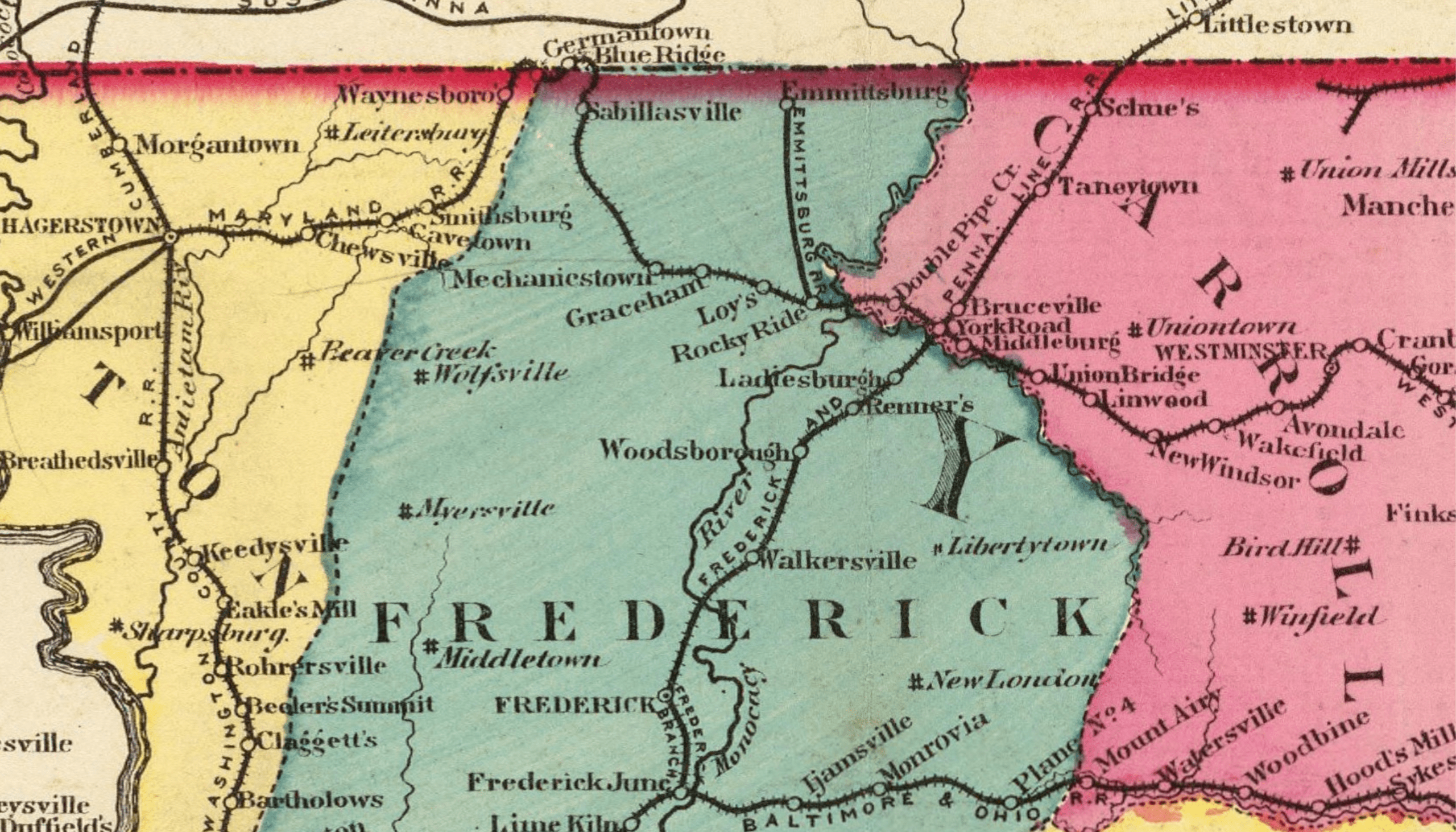
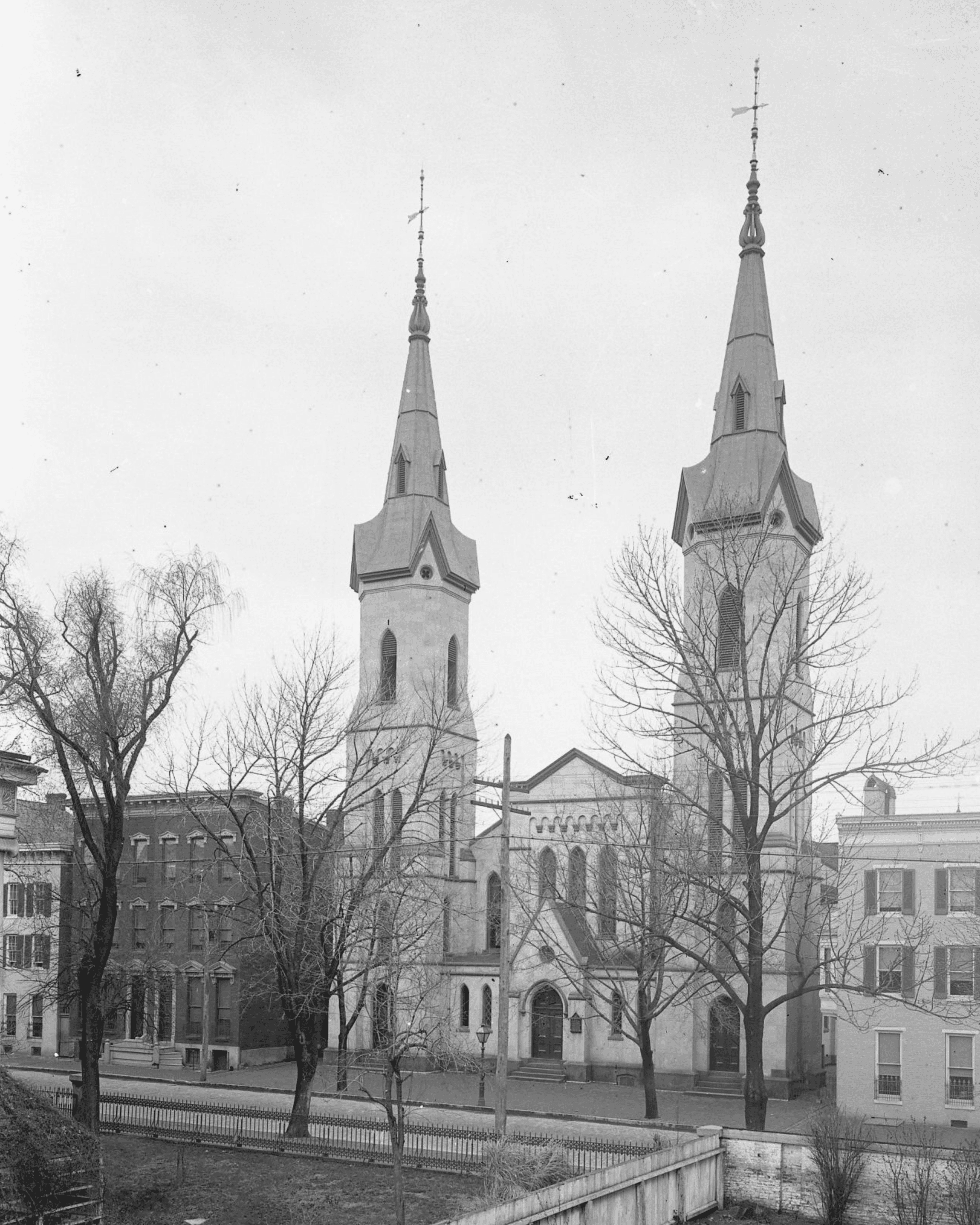
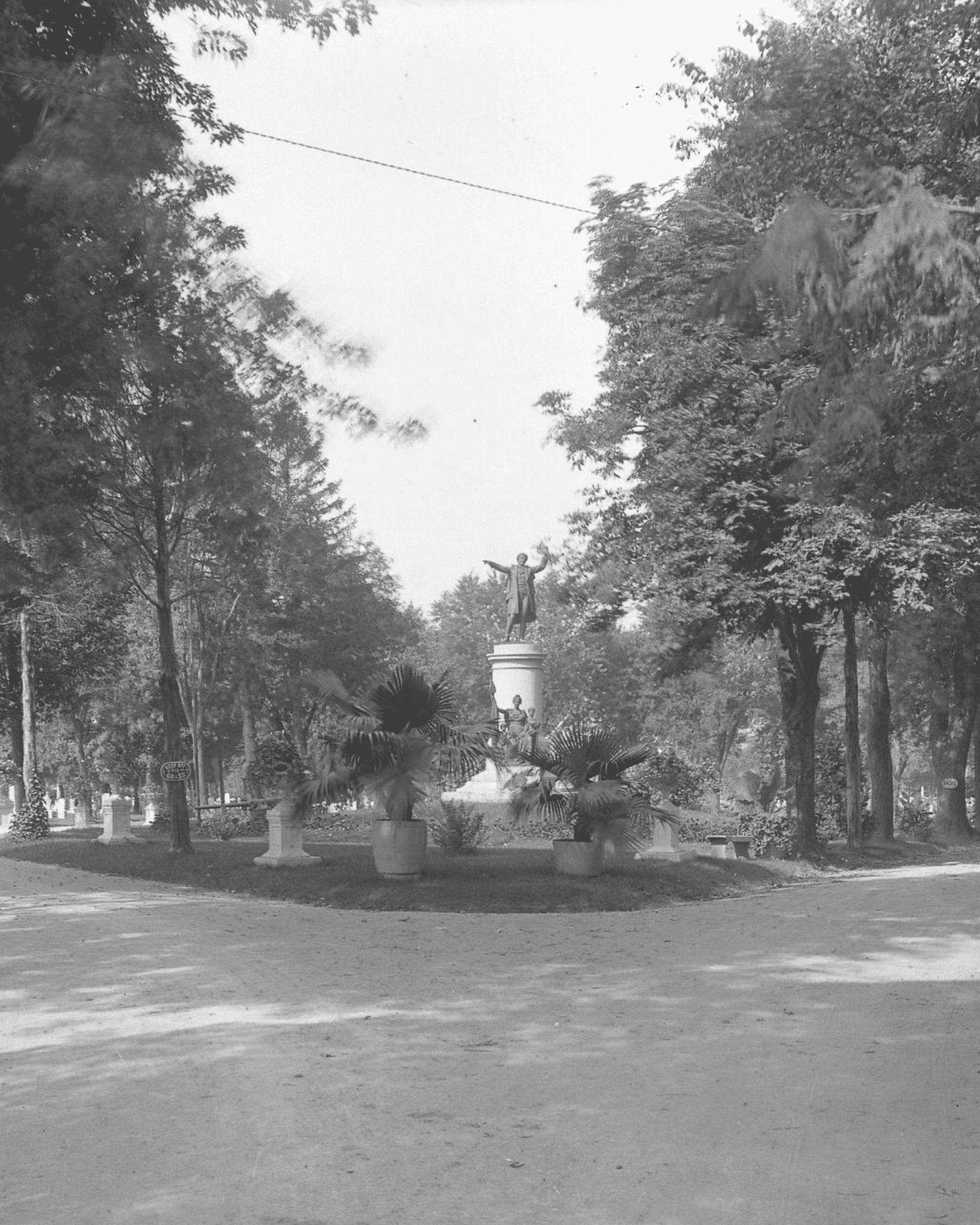
Callie Loats died on May 2, 1875. John Loats died on March 24, 1879, and in his will, he devised 24 East Church Street to his sister-in-law, Anna Josephine Sifford, on the condition that she remain unmarried. Three years later, she married and moved to Baltimore, freeing the house to become the setting for another project of John Loats: a home for orphaned girls.
THE LOATS FEMALE ORPHAN HOME
John Loats’ will contained two items of particular interest: he offered a lifetime tenancy at the Church Street property to his sister-in-law provided she remained unmarried, and he created – conceptually – a female orphanage, which would be housed inside 24 East Church Street upon his sister-in-law’s death or marriage. In 1881, she married and trustees named in Loats’ will took possession of the property and created the Loats Female Orphan Asylum, later called the Loats Home. He also left an endowment of cash, securities, and property to be administered by a board of trustees for the care of orphaned girls. On June 8, 1882, the first three girls moved into the house. The orphanage remained in operation until 1956, providing a home to 103 girls.

The occupancy fluctuated from year to year; the number of girls ranged between a handful to 20. On the first floor, the double parlor served as a space where the girls studied, read books and played games, or worked on their daily chores. The rear wing functioned as the dining room, kitchen, and laundry area. The second floor served as the dormitory, with bedrooms, a dressing room, and lavatories. The third floor offered more bedrooms when the orphanage admitted more girls than the second floor could accommodate. Behind the house, the girls enjoyed a small playground where our medicinal garden sits.
A superintendent oversaw hiring, paid bills, and contracted for repairs to the building; a matron oversaw the girls. Other positions intermittently included a cook, teacher, and seamstress. Maud Davis was one of the longest serving matrons, overseeing the upbringing of the girls at the Loats Home from 1936 until 1948, and then serving as superintendent until the home closed in 1956. The matron assigned chores, taught the girls etiquette, saw to their medical needs, and took them to church or to get haircuts. The girls learned to make their own clothing, and the orphanage provided their shoes. Originally, the girls’ schooling occurred inside the house, but eventually they attended local public schools and some continued their education at Hood College or the Nurses School, which was attached to Frederick City Hospital.
When they turned 18, the girls transitioned out of the orphanage with their clothes and a cash gift – $200 during the final years of operation – to help establish themselves as adults on their own. Trustees, the superintendent, and the matron all collaborated to help transitioning girls find jobs and housing. Accounts by girls who lived at the Loat’s Home remembered the orphanage as a happy place to grow up where they felt part of a close-knit family.
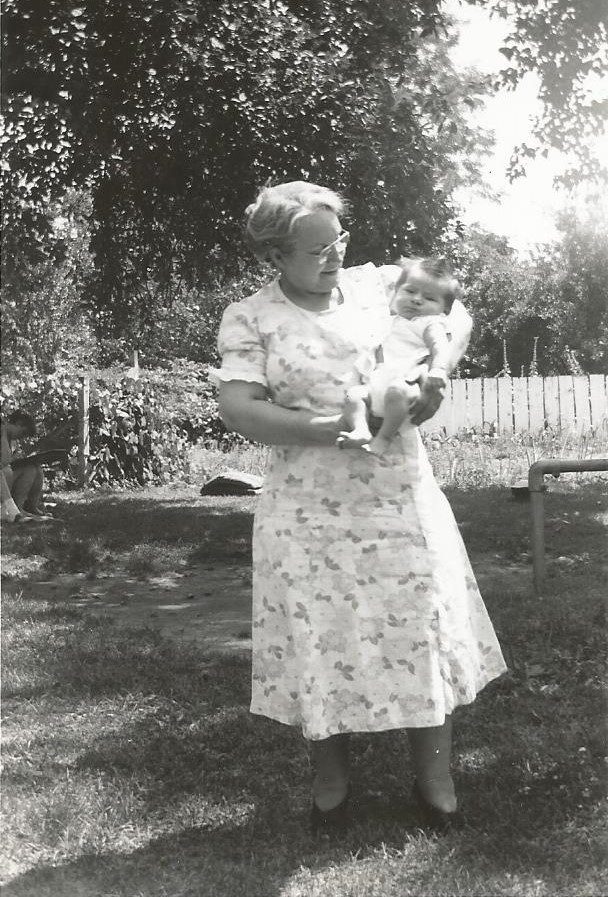
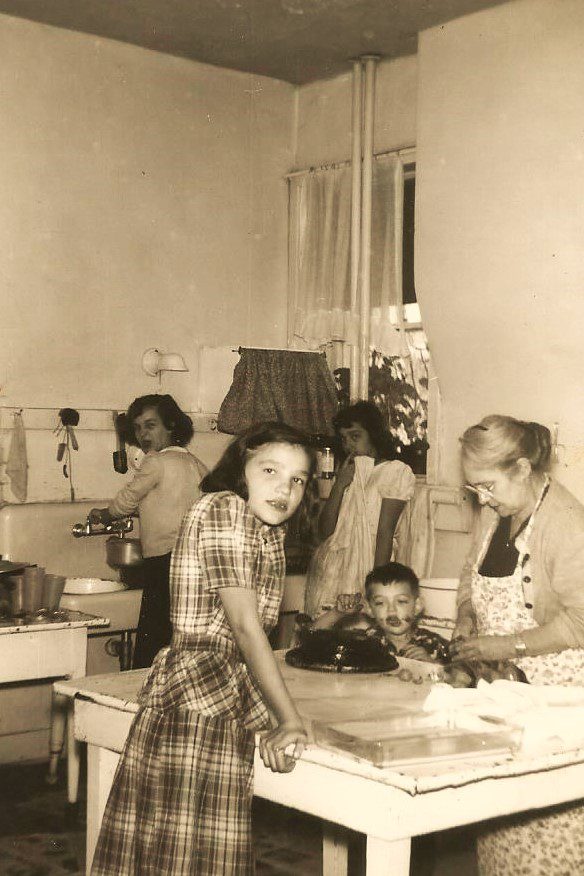
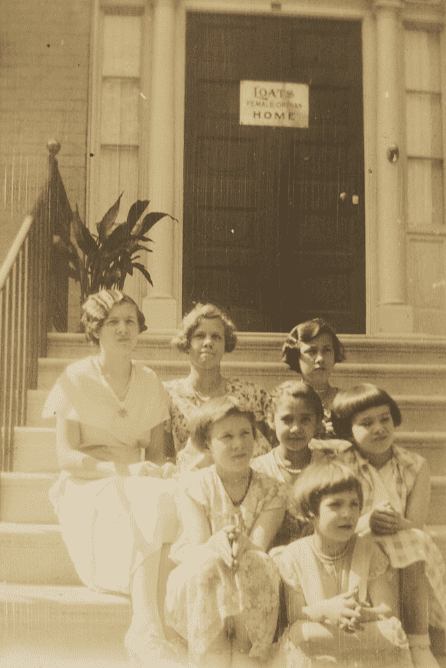
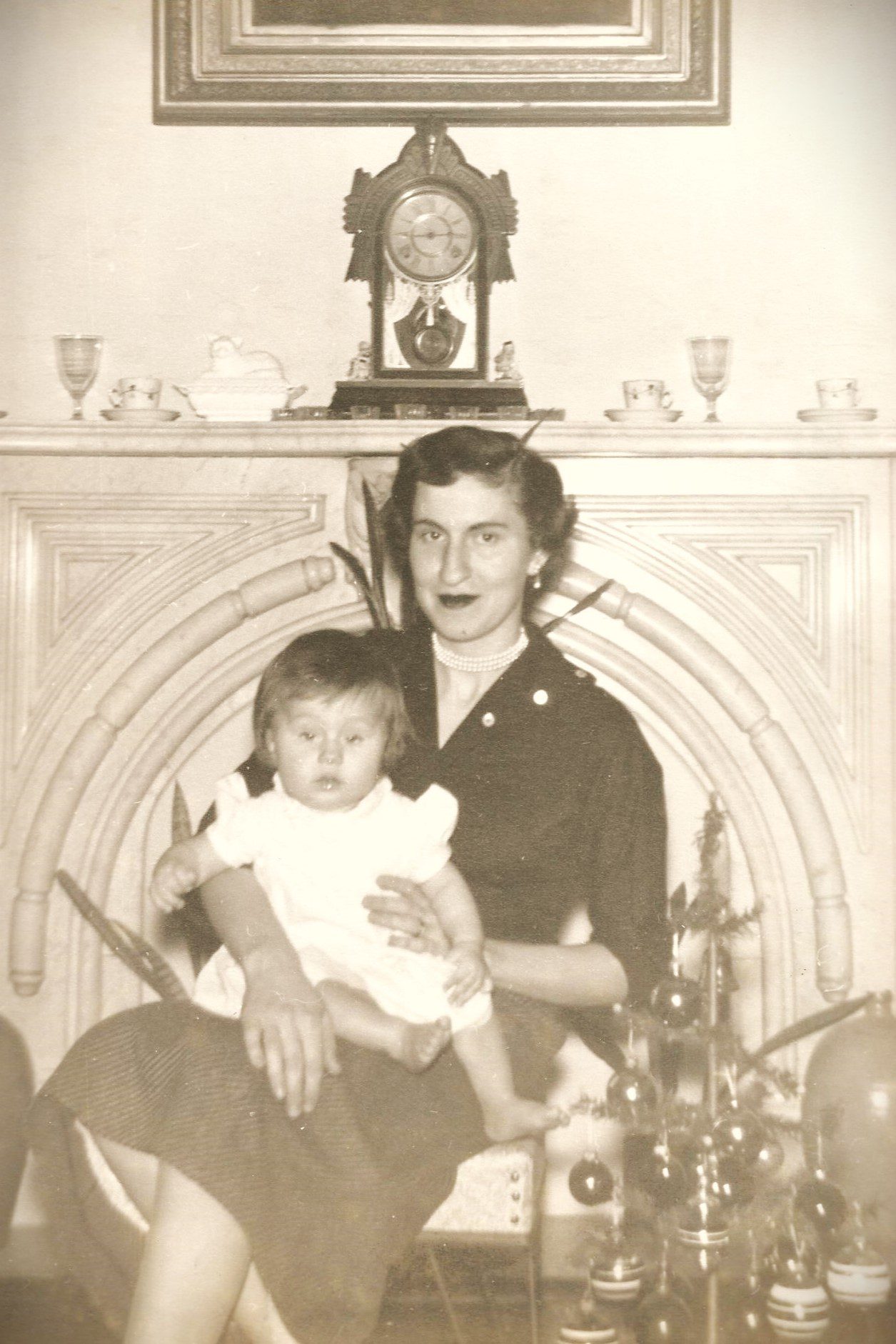
Scenes from the Loats Female Orphan Home

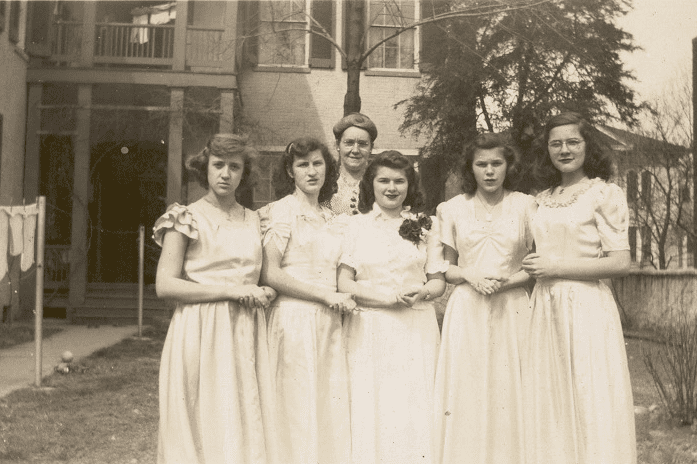
The Girls of the Loats Female Orphan Home
• Minnie Louisa Best • Ida May Smith • Arie Hornsby • Alice Sophia Kuszmaul • Blanche A Kuszmaul• Ida M. Smith • Rose Ella Elizabeth Smith • Ora Jane Wightman • Sarah Eliza Snouffer • Alice Rebecca Gideon • Margaret Amelia Gideon • Martha Elliott • Mary Ann Hughes • Susan Jane Hughes • Frances Rothenheffer • Anna Rothenheffer • Pearl Butler • Ida Nusz • Ollie Nusz • Hattie Blair • Fannie Simmons • Minnie Mathias • Rosa Mathias • Nora Guisbert • Anna May Wilhide • Sadie Long • Bessie Long • May Houck • Carrie Long • Sallie Shilling • Grace Irene Thomas • Emma Kate Thomas • Clair Elizabeth Beach • May Maria Beach • Lucy Irene Fox • Edna Mary Susan Fox • Clara Biddinger • Mary Bell Rhinehart • Bessie Francis Rhinehart • Francis Carson Birch • Nora Alice Lippy • Margaret May Birch • Sarah Jessie Inez Rochelle • Beatrice Lavenia Roberts • Mamie Irene Baer • Alma Lieb Larc • Ada Amanda Wolf • Virginia Cordellia Hines • Mary Ellen Guisinger • Lauraye Bradshaw • Mildred Bradshaw • Myrle Blanche Wollard • Mamie Catharine Wollard • Mary Louise Babington • Virgie Wollard • Sophia Elizabeth Crawford • Margaret Madelin Crawford • Helen Louise Biddinger • Florence May Ramsburg • Pauline Blanch McHenry • Catharine May Heffner • Mary Elizabeth Heffner • Mary Catharine Main • Miriam B. Morningstar • Mamie Young • Eva Natila Bowersox • Mary Virginia Bowersox • Lana May Bowersox • Nora Belle Bowersox • Amy C. Baugher • C. Louise Foster • Helen M. Delauter • Mildred Short • Betty Lou Geisbert • Martha Mabel Geisbert • Rebecca Roberts • Minnie Ambrose • Pauline Ambrose • Edna Wolford • Shirley Dutrow • F. Virginia Birch • Anna A. Arbaugh • Eva M. Walkling • Evelyn F. Hummer • Alice V. Hummer • Dorothy E. Hummer • Helen Elizabeth Gasbert • Clara A. Johnson • L. Marie Castle • Mary Louise Castle • Betty Orlean Castle • Mabel Virginia Etzler • Marian Dolores Etzler • Bertie Lorraine Etzler • Arlene Virginia Layman • Audrey Ellaine Stallings • Shirley Bernice Stallings • Amy Jean Boone • Mary Jane Boone • Bertha Patricia Boone • Helen May Nusbaum • Carole Ann Nusbaum • Linda Maxine Nusbaum
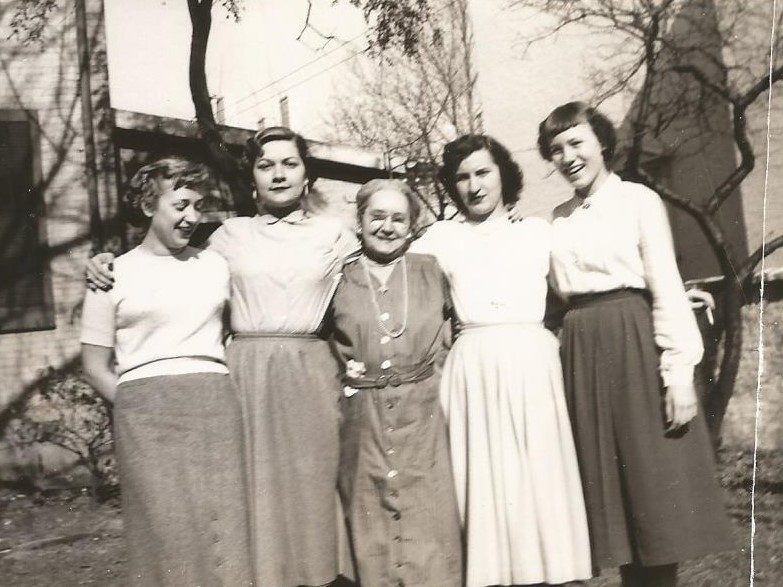
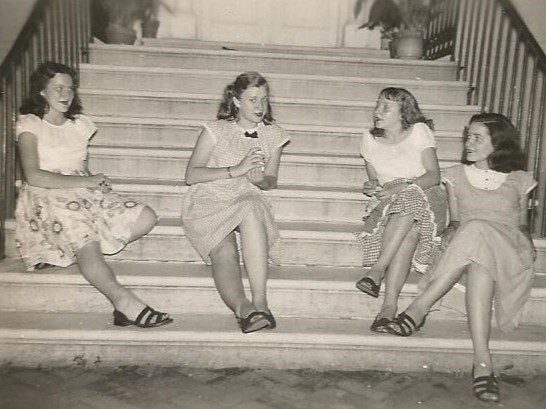
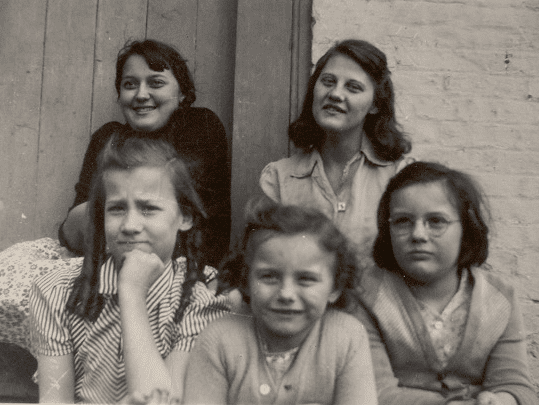
THE HISTORICAL SOCIETY

Heritage Frederick, originally known as the Historical Society of Frederick County, held its first meeting in 1892. In its early years, Society members gathered in each others’ homes where someone would lecture or present papers describing local history or genealogy to the group. Dr. Charles Hoffman (1829-1896) served as the first president of the Society; he was the first dean of the Georgetown University Law Center and the former law librarian of the United States Congress. Beginning in the early-twentieth century, local families began gifting heirlooms and papers to the Historical Society, which stored them in space provided by the City of Frederick and the C. Burr Artz Library.
The Historical Society purchased its first property in 1944 and opened a museum and library in the historic Steiner House at the corner of West Patrick and South Jefferson Streets. The cost of the house and a large donation of furniture, silver, art, and other memorabilia came from a donation by Mary Cecelia Belt of Omaha, Nebraska. Mrs. Belt’s husband, William Bradley Tyler Belt, was a native of Frederick and a descendant from the prominent Tyler family.
The closure of the Loats Female Orphan Home presented the opportunity for the Historical Society to acquire the property at 24 East Church in 1959. The organization moved its collections into the new headquarters and sold the Steiner House to the Women’s Civic Club of Frederick. When the new museum opened in 1960, the exhibits included the Tyler-Belt Collection and a recently-acquired collection of Frederick County antiques and memorabilia given by the estate of Marshall Etchison. Etchison was president of the Historical Society from 1944 until 1946 and a prolific local historian. After many years operating as a house museum, the Historical Society (renamed Heritage Frederick in 2016), transitioned the spaces in the house to exhibits of artifacts from Frederick County history.

